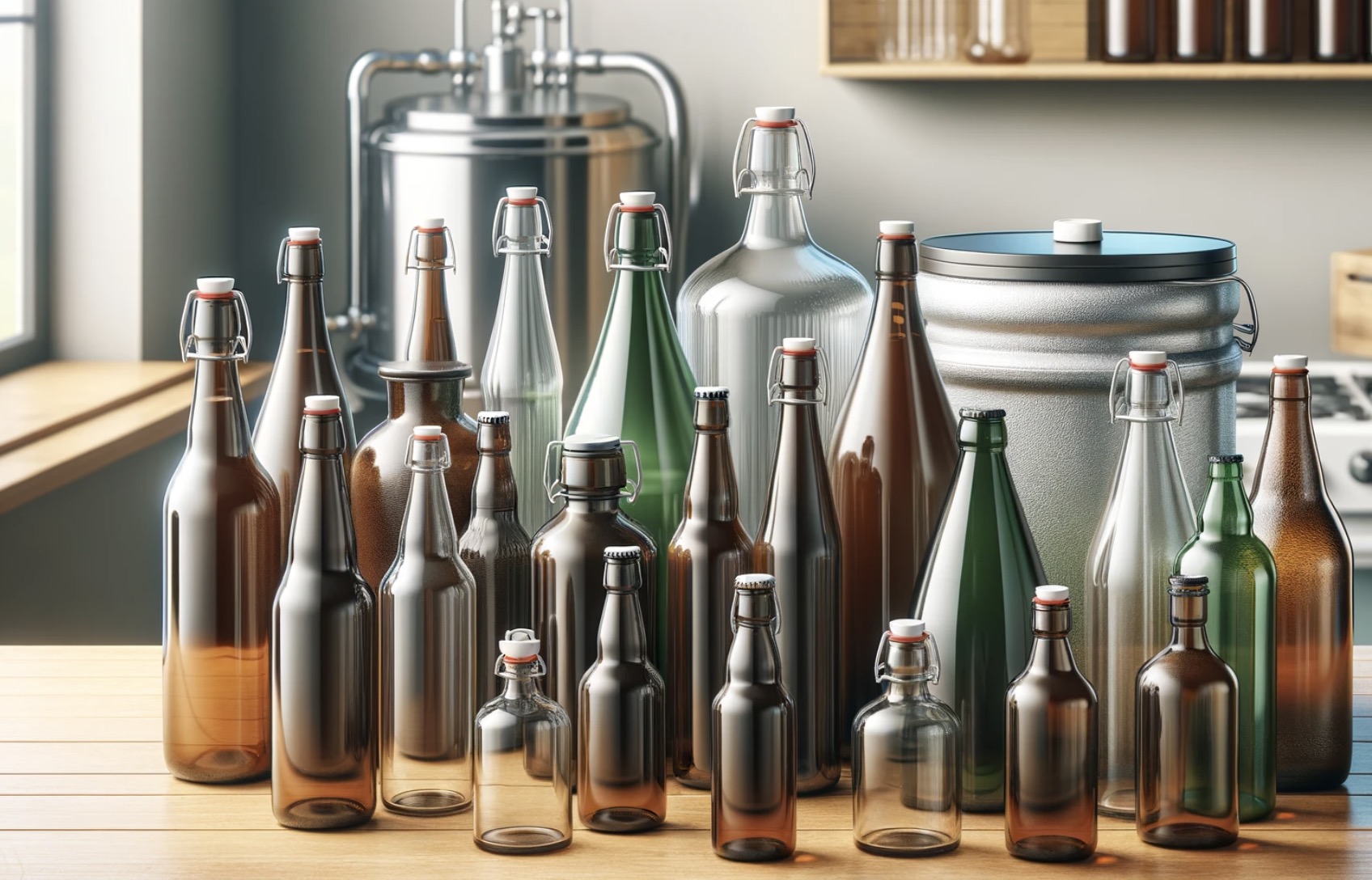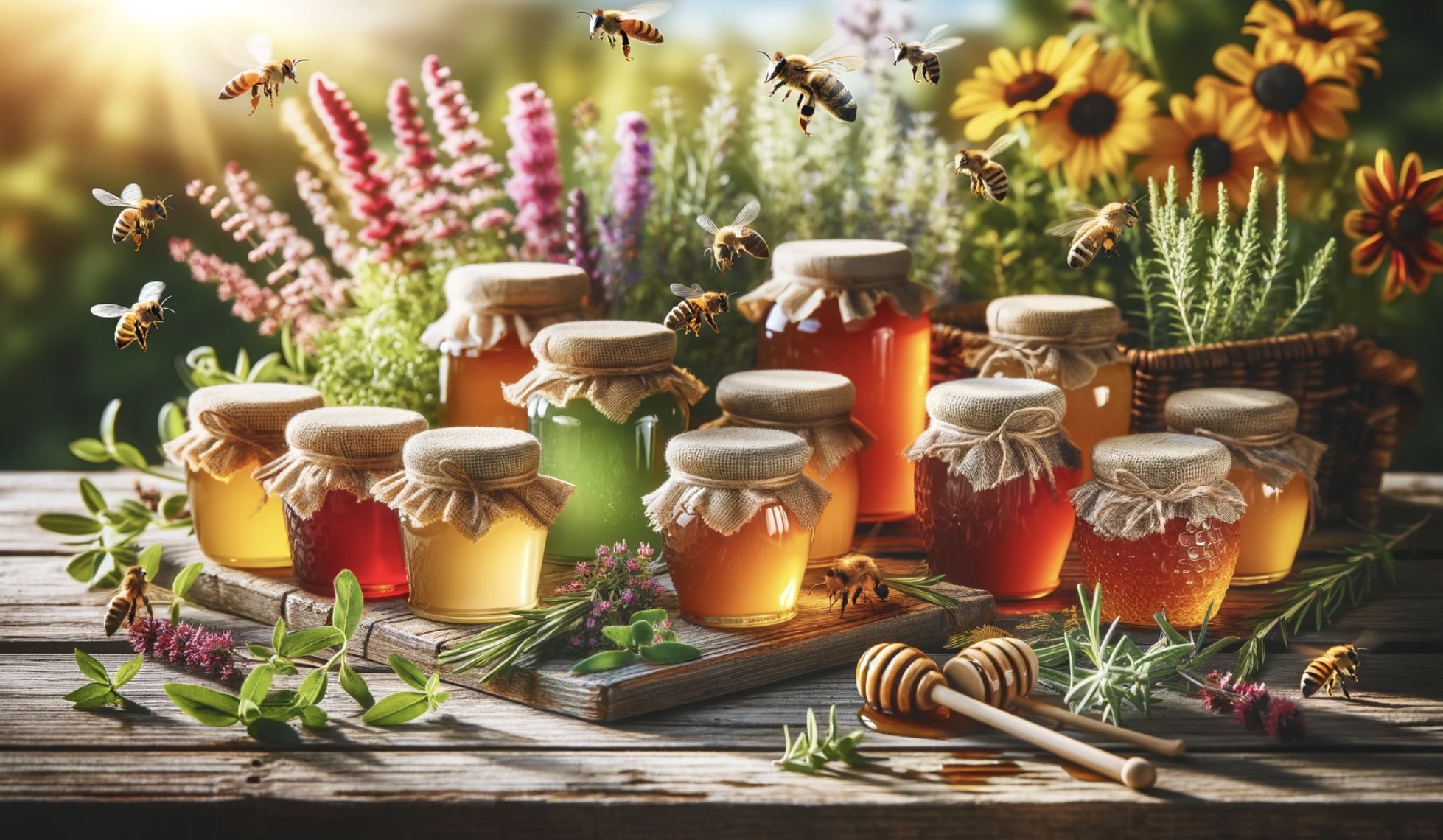In this guide, we will provide you with easy-to-follow instructions on how to make your own delicious blueberry cider at home.
Blueberry cider is a refreshing and fruity beverage that is perfect for any occasion – and it’s easy to make!
Whether you are a cider enthusiast or just looking to try something new, this guide will walk you through the process step by step.
Ingredients and Equipment Needed for Blueberry Cider
Before we dive into the process, let’s make sure you have all the necessary ingredients and equipment on hand.
Here’s what you’ll need:
Ingredients:
- 4 pounds of fresh blueberries (or frozen if fresh is not available)
- 1 gallon of apple juice
- Pectic enzyme (optional)
- Camden tablet or potassium metabisulfite
- Yeast nutrient (such as Fermato)
- French oak chips (optional)
Equipment:
- Blender/juicer
- Fermenter (at least 1.4 gallons in size) but you can scale the recipe as you like…
- Airlock and stopper
- Sanitizing solution
- Measuring spoon
- Hydrometer or refractometer (for measuring gravity)
- Nylon fermentation bag
- Glass weight (for keeping the bag submerged)
- Funnel
- Mixing spoon
Now that you have all your ingredients and equipment ready, let’s move on to the next steps of making your blueberry cider.
II. Step-by-Step Instructions
1. Preparing the Blueberries
- Rinse the fresh blueberries, removing any stems, sticks, or berries that do not look good.
- Place the blueberries in a blender and blend until you have a smooth puree.
- Press the juice using a straining cloth or a cider press (if you happen to have one…)
- Pour the blueberry puree into the fermenter.
Note: Blending the blueberries is optional, but it helps to break down the cell walls and extract more juice and sugars.
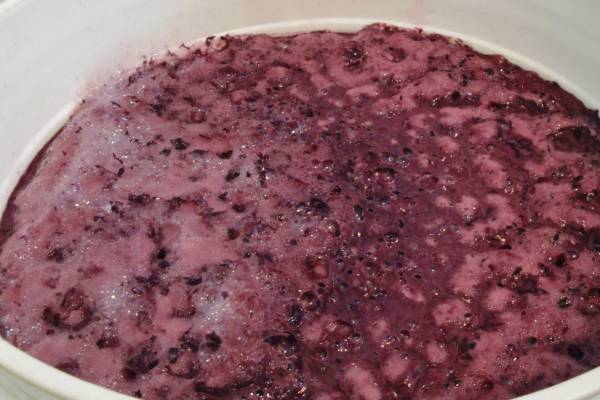
2. Adding Enzymes and Camden Tablet
- If desired, add pectic enzyme to the blueberry puree. This helps break down the cell walls further for better extraction. Follow the recommended dosage on the package.
- Crush a Camden tablet and dissolve it in a little bit of water. This will help sanitize the cider by killing off any unwanted bacteria or wild yeasts. Add the Camden tablet solution to the fermenter.
Note: The Camden tablet is necessary, especially if using fresh blueberries, to ensure a clean fermentation process.
3. Adding Apple Juice
- Pour the gallon of apple juice into the fermenter, mixing it with the blueberry puree.
- Add yeast nutrient to provide essential nutrients for yeast growth and a healthier fermentation. Follow the recommended dosage on the package.
- Make sure to sanitize all equipment that comes into contact with the cider at this stage.
4. Pitching the Yeast
- Sprinkle half of a packet of ale yeast (such as Safale US-04) over the surface of the cider. This yeast is known for its balanced fruity and floral characteristics.
- Gently stir the mixture to distribute the yeast evenly.
5. Optional: Adding French Oak Chips
- If desired, you can add French oak chips to enhance the flavor of your blueberry cider. Soak the oak chips in boiling water for a few minutes to sanitize them before adding them to the fermenter.
6. Fermentation
- Seal the fermenter with an airlock and stopper.
- Place the fermenter in a cool, dark location with a consistent temperature between 60-70°F (15-21°C) and let the cider ferment for about 7-10 days.
- Monitor the airlock for any signs of activity, such as bubbling.
Making your own blueberry cider at home is an exciting and rewarding process. With the right ingredients and equipment, you’ll have a delicious beverage to enjoy in no time.
Remember to sanitize all equipment throughout the process to maintain a clean and healthy fermentation environment.
In the next blog section, we’ll discuss the fermentation process in more detail and how to know when your blueberry cider is ready for bottling etc.
II. Blueberry Cider Making Process
Making blueberry cider is a fun and delicious way to enjoy the flavors of fresh blueberries. Whether you’re using fresh blueberries or frozen ones, the process remains relatively the same. Here is a step-by-step guide to making your own blueberry cider:
Gathering fresh blueberries or using frozen ones
The first step in making blueberry cider is acquiring the key ingredient – blueberries.
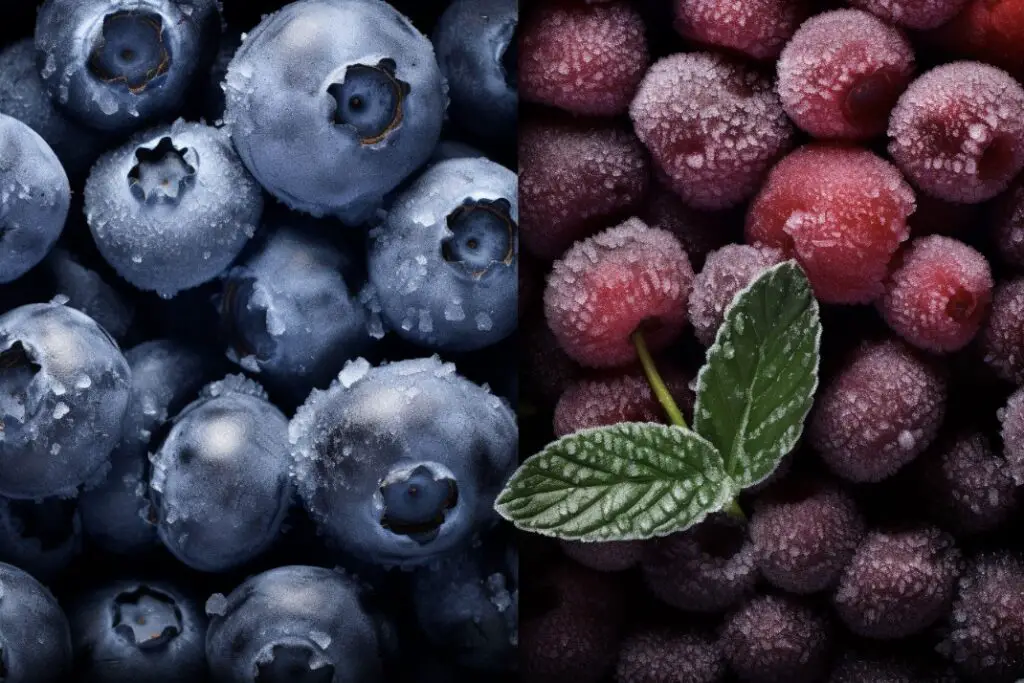
You can either gather fresh blueberries during the harvest season or use frozen ones if fresh ones are not available.
Frozen blueberries are actually easier to juice as the ice crystal rupture the cells to let out more juice!
However, frozen blueberries do taste somewhat different then fresh ones. Not necessary worse, but thats a subjective matter. I like the taste of both…
If you choose frozen blueberries, make sure they are free from any ice crystals and thaw them before use.
I suggest using fruit juice as a base
Next, you’ll need to decide on the base for your blueberry cider. I normally use apple juice as the base. But you can also use other juices such as pear juice, plum etc.

The reason to add a good sweet base is that there is usually not enough sugar and somewhat too much acid in blueberries to make a good cider in the end.
In my opinion, pear juice really complements the taste of blueberry well, but it is also harder to obtain. Apple juice can be bought almost anywhere…
Both options will provide a sweet and fruity backdrop that complements the blueberries well. Choose a high-quality and unfiltered juice or cider for the best flavor!
Blending the blueberries and adding necessary ingredients
To extract the flavors from the blueberries, you’ll need to blend them into a smooth puree. Use a blender or a food processor to achieve the desired consistency.
Once blended, it’s essential to add some necessary ingredients to ensure successful fermentation. These include pectic enzyme and Camden tablets, which help with juice extraction and prevent spoilage, respectively.
Adding pectic enzyme
Pectic enzyme is added to the blueberry puree to break down the pectin, a natural substance found in fruits that can cause cloudiness in the cider.

Adding Campden tablets
Campden tablets are added to the blueberry juice to inhibit the growth of harmful bacteria and wild yeasts that can spoil the cider.
The amount you need to add depends on wether you like a bit of “wild fermentation” to take place, on the pH of the combined juice (e.g. apple + blueberry) and also where the juice came from (frozen or fresh blueberries).
Fermentation process and timing
Transfer the blueberry puree into a fermentation vessel. Add the chosen base (apple juice or cider) to the vessel and mix well.
Cover the vessel with an airlock to allow carbon dioxide to escape while preventing oxygen from entering.

Fermentation typically takes 1-2 weeks, but the exact timing may vary depending on the temperature and yeast activity.
Racking the cider to remove sediments
After fermentation is complete, transfer the cider into a secondary vessel to remove any sediments that have settled at the bottom. This process, known as racking, helps clarify the cider.
Sweetening the cider to taste
Taste the cider and decide if you prefer a sweeter flavor. If so, you can add a sweetener, such as sugar or honey, to enhance the sweetness. Be sure to dissolve the sweetener in a small amount of boiled water before adding it to the cider.
Carbonating the cider
To achieve a sparkling cider, you can carbonate it. This can be done by transferring the cider to airtight bottles and adding priming sugar, which will produce carbon dioxide during the secondary fermentation.
Bottling and storing the cider
Finally, bottle your blueberry cider by transferring it to clean and sanitized bottles. Seal the bottles tightly and store them in a cool and dark place for aging. The cider will continue to develop flavors over time, so it’s best to let it sit for a few weeks before enjoying.
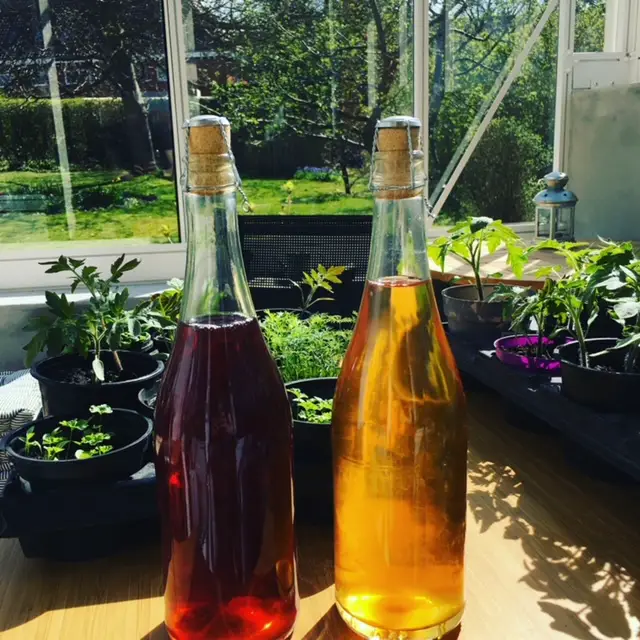
Making blueberry cider is a rewarding process that allows you to savor the natural sweetness and tanginess of blueberries. Whether you’re a cider enthusiast or a beginner, this guide will help you create a delicious beverage to enjoy during any occasion. Cheers to homemade blueberry cider!
III. Tips for a Successful Blueberry Cider
To ensure a successful batch of blueberry cider, there are a few key tips to keep in mind. By following these guidelines, you can create a delicious and refreshing beverage that captures the essence of fresh blueberries.
Selecting the best blueberries
When making blueberry cider, it’s important to start with high-quality blueberries. Look for berries that are ripe, juicy, and free from any signs of mold or damage. If possible, consider visiting a you-pick farm during blueberry season to ensure you’re getting the freshest berries available.
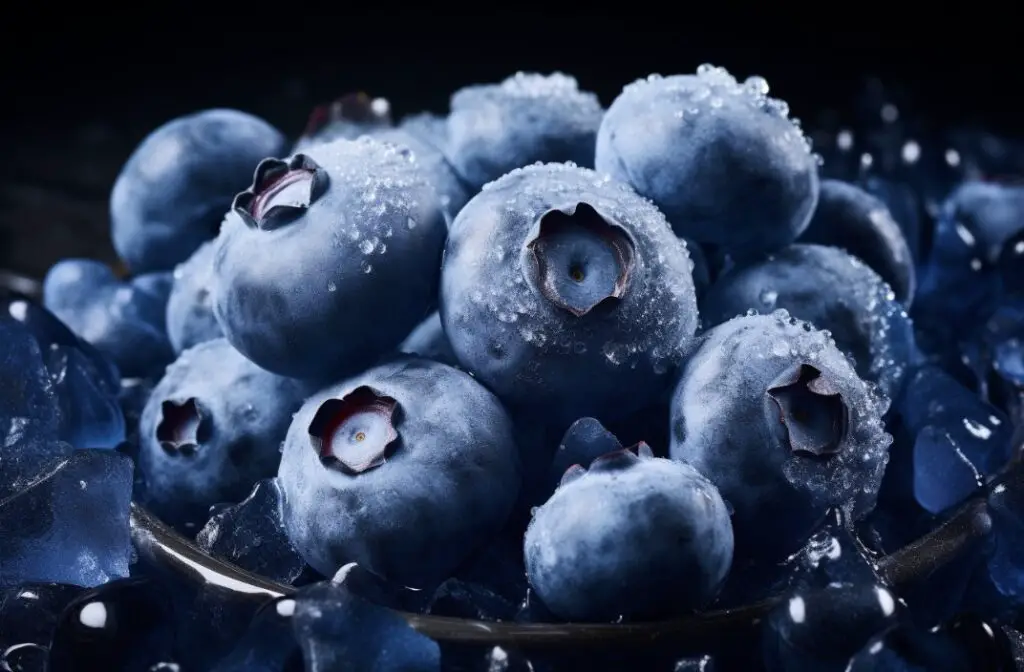
Using quality apple juice or cider as a base
In addition to blueberries, apple juice or cider serves as the base for your blueberry cider. Opt for a high-quality variety made from fresh apples, as this will contribute to the overall flavor and sweetness of the final product. You can choose between store-bought apple juice or cider, or even make your own if you have access to fresh apples.
Proper sanitation and handling of ingredients and equipment
Maintaining proper sanitation throughout the cider-making process is crucial to prevent the growth of unwanted bacteria or yeast. Make sure to thoroughly clean and sanitize all equipment, including fermenters, spoons, and airlocks, before using them. Use a sanitizing solution or follow the manufacturer’s instructions for sanitizing your equipment properly.
Storing the cider in a cool, dark place
Once you’ve prepared your blueberry cider and it’s fermenting, it’s essential to store it in a cool, dark place. This helps to maintain a consistent temperature and minimize exposure to light, which can affect the flavor and quality of the cider.

Choose a location away from direct sunlight and where temperature fluctuations are minimal.
By following these tips, you’ll be on your way to creating a flavorful and refreshing blueberry cider that you can enjoy with friends and family. Experiment with different ratios of blueberries to apple juice or cider to find your preferred balance of flavors. Cheers to a successful batch of blueberry cider!
Note: For a step-by-step guide on how to make blueberry cider, refer to our previous blog post on Easy Blueberry Cider Recipe.
IV. Blueberry Cider Variations and Flavor Enhancements
Once you’ve mastered the basic process of making blueberry cider, you can start exploring different variations and flavor enhancements to create unique and delicious brews. Here are some ideas to get you started:
1. Blending with other fruit juices for unique flavors
One way to add complexity to your blueberry cider is to blend it with other fruit juices. This allows you to experiment with different flavor combinations and create exciting new profiles. Here are a few ideas:
- Classic Apple-Blueberry Blend: Combine your blueberry cider with fresh apple juice for a classic blend that balances the sweetness of the apples with the tartness of the blueberries.
- Strawberry-Blueberry Fusion: Mix blueberry cider with strawberry juice for a fruity and refreshing twist. The sweetness of the strawberries complements the bold flavor of the blueberries.
- Pineapple-Blueberry Infusion: Add pineapple juice to your blueberry cider for a tropical twist. The acidity of the pineapple balances the richness of the blueberries, creating a well-rounded flavor.
Feel free to experiment with different ratios of blueberry cider and other fruit juices to find the perfect balance that suits your taste.
2. Aging the cider to develop more complex flavors
Just like wine, cider can benefit from aging. Allowing your blueberry cider to mature for a few months can help develop more complex flavors and aromas. During the aging process, the flavors blend together and mellow out, resulting in a smoother and more refined beverage.
Store your cider in a cool, dark place, such as a cellar or refrigerator, for optimal aging. Make sure to regularly check on your cider to monitor its progress and ensure that it doesn’t develop any off-flavors or spoil.
3. Experimenting with different yeast strains
The choice of yeast can significantly impact the taste and aroma of your blueberry cider. Different yeast strains produce different flavors and alcohol levels, allowing for a wide range of possibilities. Here are a few yeast options to consider:
- Champagne yeast: This yeast strain produces a dry and crisp cider with a high alcohol content. It enhances the natural tartness of the blueberries, resulting in a refreshing beverage.
- Ale yeast: Ale yeast ferments at warmer temperatures and produces fruity esters, which can complement the blueberry flavors and add complexity to the cider.
- Wild yeast: For a more unique and rustic cider, you can experiment with using wild yeast strains. This can give your cider a distinct character and showcase the natural fermentation process.
Remember to carefully follow the instructions provided by the yeast manufacturer and monitor the fermentation process to ensure optimal results.
By exploring these variations and flavor enhancements, you can take your blueberry cider to the next level and create a truly personalized beverage that suits your taste preferences.



